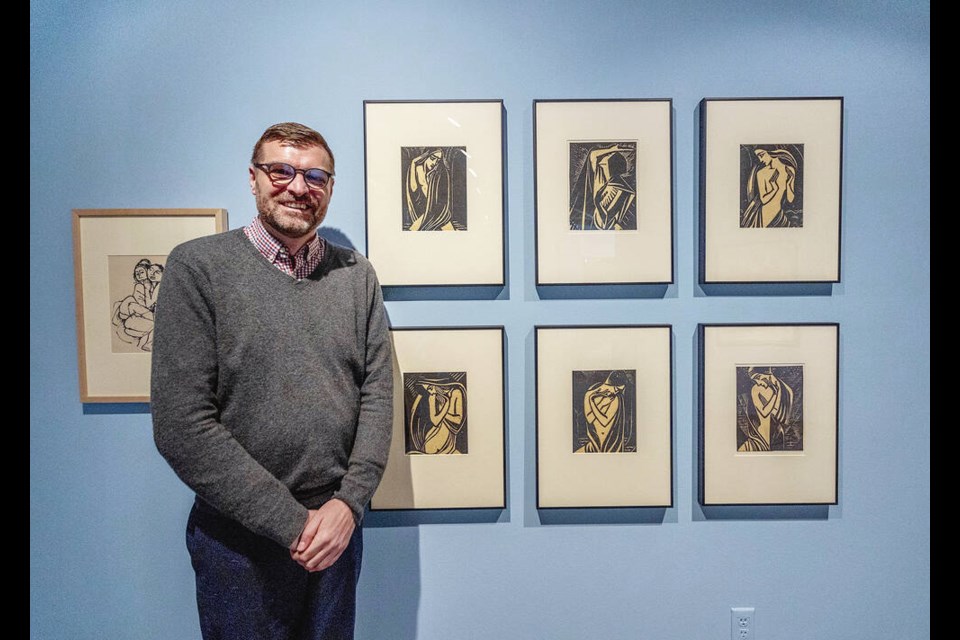IN THE FLESH: THE NUDE IN ART, PAST AND PRESENT
Where: Art Gallery of Greater Victoria, 1040 Moss St.
When: Dec. 9-March 31
Admission: Free on Saturday, Dec. 9; regular gallery admission rates from Dec. 10 onward
Iconic pieces through history, ranging from Michelangelo’s David to Sandro Botticelli’s The Birth of Venus, have featured unclothed subjects. Exploitative they are not — at least not by today’s standards.
Nudity has become a complex issue in the modern era, however, which makes a new exhibit at the Art Gallery of Greater Victoria somewhat of a tricky proposition. Though the nude — a form of visual art and style of artistic expression — is explicitly not nudity for nudity’s sake, some cannot differentiate between the two.
“If anyone is thinking it will be overly shocking, I think they will be pleasantly surprised that it is not,” said Steven McNeil, chief curator and director of collections and exhibitions for the AGGV. “There are some works out there in the world that are quite explicit and difficult to see, but this are not the kind of works we are showing.”
In The Flesh: The Nude in Art, Past and Present draws largely on the gallery’s permanent collection, including pieces by Pierre-Auguste Renoir, Auguste Rodin, Pablo Picasso and Henry Moore, with a few pieces by living artists on loan from private collectors. McNeil, who joined the gallery a little over a year ago, was familiarizing himself with the AGGV’s entire collection when he came up with the idea for the new exhibit. “I realized we have this really amazing collection of figurative nudes, that span history from the Renaissance right to the present.”
The exhibit opens Saturday, with a free public open house from 10 a.m. to 5 p.m. McNeill will be joined by Comox Valley artist Andrew Moncreif, now based in Berlin, and whose work — including a piece commissioned by the AGGV — is part of the exhibition, for a free artist talk at 11 a.m. McNeil said the hope is that Moncrief’s work, which interpolates themes ranging from masculinity to queer identity, stirs conversation not concern.
“There wasn’t really hesitation on the part of the gallery for this type of exhibit,” he said. “Figurative work is such a big part of our history, we can’t separate that from the act of being an art museum and collecting. But of course, I understand it might not be for everybody.”
McNeil believes In the Flesh offers much in the way of food for thought, and will skirt and perceived controversy. Protests to this kind of showcase aren’t far removed from memory, however. One painting by celebrated Montreal portrait artist Lilias Torrance Newton, included in the AGGV exhibition, was the subject of some scorn during the early part of the 20th Century.
“In the 1920 and ’30s, there were a lot of controversies around showing nudes, especially in big exhibitions in Toronto and Montreal,” McNeil said. “A lot of artists had their work censored or removed from shows, despite insisting it was part of the artistic process.”
A series of prints circa 1915 by Emma Schlangenhausen, gifted to the AGGV in 1955 by Maud Brown, the wife of Eric Brown, the first director of the National Gallery of Canada, will also be on display, alongside works by modern and contemporary Indigenous and Canadian artists, including Pat Martin Bates, Ivan Eyre, Evergon, Michael Morris, Susan Point and Carole Sabiston.
The exhibit, 110 pieces all told, is presented in four sections, including historical nudes, modernism in Canadian nudes, the social impact of nudes during the 1960s and ’70s, and contemporary examples.
The grouping of themes made McNeil’s job quite a bit easier, he said. “The hardest part of a show like this is the editing process. We have a very large, strong collection, but limited gallery space. It is difficult whenever you do a show like this. At first, I wasn’t sure we had enough to fill the space. But the more I looked, the more I realized it was going to be tough editing down what we include.”



